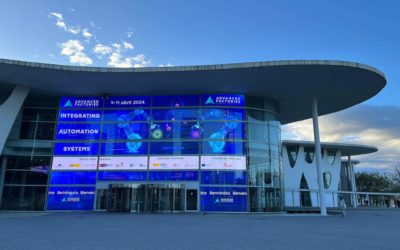Continuous process improvement is still a major challenge for industrial companies. In order to generate added value for the customer and eliminate waste, many organizations apply the Kaizen methodology. Below, we take a look at this business philosophy, its benefits and how it can be promoted through the use of an MES system such as Mapex.
What is the Kaizen methodology?
The Kaizen methodology is an approach that looks for ways to improve day by day. In industrial organizations, this business philosophy supports continuous and incremental changes in production processes to achieve operational excellence.
One of the main cornerstones of Kaizen is the systematic detection, elimination and prevention of the eight types of waste that can be generated in companies: overproduction, waiting, transportation, extra-processing, inventory, motion, defects and unused talent.
Eliminating this waste means increasing productivity, improving quality and reducing manufacturing costs. Moreover, this methodology not only has a positive impact on an organization’s bottom line, but also on the level of satisfaction and involvement of the people who work in it.
To achieve its objectives, Kaizen is based on the following five principles:
- Know your customer: Knowing who you are selling a product or service to is the way to create value. Companies need to identify the interests of their customers to improve their experience.
- Let it flow: Everyone in the organization should be conducive to generating value and eliminating waste.
- Go to Gemba: This principle is linked to leadership and follow-up action, going where value is being created.
- Empower people: It is important to organize teams well, establish coherent objectives, and provide a system and tools to achieve all these goals.
- Be transparent: Performance and improvements must be tangible and visible, hence the importance of real data.
The PDCA cycle for applying continuous improvement
The PDCA cycle (also known as the Deming cycle) is a Lean tool that can be used to apply continuous improvement. Here are its four steps:
1. Plan
This first stage serves to identify the improvement opportunity. The team must also determine the resources to be employed, stakeholder requirements, project implementation conditions and final objectives.
2. Do
The next step is to execute the actions that have been previously established, defining responsibilities and deadlines. It is usual to start with a pilot test in order to minimize risk and measure the effectiveness of the plan before deploying it on a large scale.
3. Check
Once in place, the performance of the plan should be checked frequently on the basis of reliable data.
4. Act
Finally, successful improvements should be reviewed with the aim of implementing them more widely in the organization. In this way, the knowledge gained is used to plan further actions and to continue the continuous improvement cycle.
If, on the other hand, the change has not worked, the company will have to repeat the PDCA cycle starting from a different approach.
In either case, the data collected during the process may reveal unexpected information from which new opportunities for improvement can be identified.
What are the benefits of the Kaizen method?
Thanks to the Kaizen methodology, companies apply continuous improvement in those activities that generate added value for their customers, eliminate inefficiencies and give way to a more productive workplace. Some of the benefits of the Kaizen method are:
Increase in productivity
Eliminating waste, encouraging employee participation in contributing ideas to improve processes, or ensuring safety, cleanliness and order in the work environment. All these actions lead to increased productivity in organizations.
Greater efficiency in the use of resources
The Kaizen method helps to shorten production cycles and improve company performance by optimizing existing resources. It is not about increasing investment in personnel, time, material or energy consumption, but about achieving small improvements on a continuous basis, reducing waste and simplifying processes as much as possible.
Improving quality and customer satisfaction levels
The core of the Kaizen methodology consists of generating value for the end customer and, to achieve this, it is very important not to lose sight of quality. In this sense, the continuous search for process improvement, as well as the reduction of defects, rework, complaints and returns, is key to satisfy and even exceed customer expectations: more competitive prices, on-time delivery, higher quality products, etc.
Cost reduction
Implementing continuous improvement in an organization brings considerable cost savings in the long run. When companies are able to increase productivity, reduce waste, offer quality products and services, and curb staff turnover, they reap huge benefits to their bottom line.
Mapex, your partner in the continuous improvement process of your industrial company
Continuous improvement only works when companies can measure and evaluate the real impact of the initiatives they carry out. At Mapex, we help you accomplish this goal with our automated data collection software.
With the MES system, industrial companies are able to further boost the Kaizen methodology: the platform gives them real-time visibility of what is happening in the factory; it allows them to reliably track actions and correct decisions made with greater agility, and uncovers new opportunities for continuous improvement.
In addition, the software simplifies analysis and reporting. Mapex generates dashboards with the most relevant KPIs so that department managers can see whether continuous improvement objectives are being met and how changes are impacting the company’s productivity, performance and profitability. All this without wasting time collecting and processing information manually.
The MES platform is also designed to engage operators in the continuous improvement journey and strengthen their commitment to the organization. Through the use of Mapex, workers are able to correctly execute the action plan, engage in higher value-added tasks, identify failures in real time and make suggestions for improvement.
For more information on how we can help you address the continuous improvement process in your industrial company, please fill out our contact form and request a demo.



